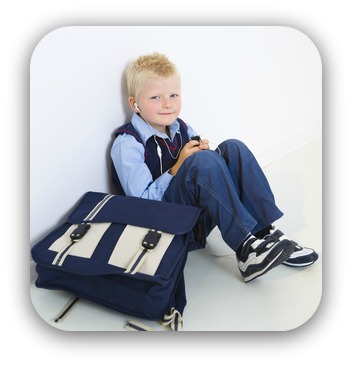Teaching to the different learning styles is not hard. It actually makes the classroom more enjoyable, stimulates the brain and fosters emotional health in our students!
What is a learning style?
It is simply a way to explain a student’s preferred method of learning and development. Identifying particular learning styles children display is not meant to pigeon-hole them. It is to help target the way they learn best so they can create new meaning and develop new neurological pathways.
Most kids actually have multiple learning styles traits. They use those different methods to extract information and retain it in their short term memories. Then it takes repeated exposures to put the information into long-term memory.
As a personal example, if I can put difficult material to music or tap a rhythm out, I can remember just about anything.
I also associate things with music. When I learned about the Renaissance period, listening to chamber music helped put all of those facts, dates and events into my long term memory.
That is how understanding this theory can have implications for instructional design: find the most preferred method of learning, design lessons that meet this style and repeat often for deeper understanding.
7 Learning Styles
The theory of different modes to acquire knowledge is based on Howard Gardner’s Multiple Intelligence Theory.(2) This is distinctly different to cognitive perceptual styles (organizing and processing information), learning strategies (how one plans to acquire knowledge) and learning preferences (the type of teaching a person prefers to learn under). (1)
A learning style is a distinct way of acquiring knowledge, often done without a person even realizing it (a learning strategy is when one makes an actual plan to get knowledge).
In the educational community, there are generally 7 modes we talk about with regards to how students learn. They are:
- Linguistic: language & words
- Logical: numbers and reasoning
- Musical: rhythm and sounds
- Kinesthetic: movement
- Visual/Spatial: images
- Intrapersonal: self-awareness
- Interpersonal: awareness of others
PDF Download: What are your kids learning styles?
How we use these styles to intelligently design lessons is the key. Kolb’s focused on how these styles are all part of an experiential learning model. Being able to experience a learning task in different modalities is critical, but then having to reflect and conceptualize about the task is what leads to deeper understanding.
This applies to all types of learners and is related to how the brain actually works to store and retrieve information.
Kids’ Learning Styles Activities
Visual Learning Style
- Draw pictures
- Focus on using graphs and diagrams
- Use visualization while reading
- Use colors
- Focus on “seeing” the words you try to spell
Auditory Learning Style
- Read out loud
- Talk through information
- Discuss concepts with others
- Listen to information repeatedly and record it
- Sound out unfamiliar words by syllables, blends, digraphs and phonemes
Kinesthetic Learning Style
- Highlight important information
- Walk as you read
- Use role play
- Hold the book in your hands
- Hold a stress ball or chew gum/candy
Research has shown that better connections and deeper learning are attained when a visual or pictorial method is used in addition to auditory. Add movement and learning becomes even better!
What that means for us is that we cannot only “talk” our lessons if we really want students to understand the concepts.
Also, teachers should not indirectly encourage students to think they cannot learn without their preferred mode of instruction. We need to develop learners who can adapt to different teaching modalities to be successful.
Sources Cited
1. McLoughlin, C. (1999). The implications of the research literature on learning styles for the design of instructional material. Australian Journal of Educational Technology, 15(3), 222-241.
2. Gardner, Howard. (1983). Frames of Mind.
